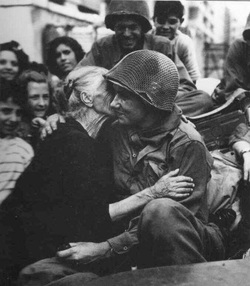


Accompanied by Tanacharison, a Seneca chief (also known as the Half-King) and 12 native warriors, Washington led a party of 40 militiamen on an all night march towards the French position. Dinwiddie wanted Washington to "act on the defensive," but also clearly empowered Washington to "make Prisoners of or kill & destroy…" all those who resisted British control of the region.Įager to send their own diplomatic directive demanding an English withdrawal from the region, a French force of 35 soldiers commanded by Ensign Joseph Coulon de Villiers de Jumonville camped in a rocky ravine not far from Washington's encampment at the Great Meadows (now in Fayette County, Pennsylvania). George Washington and approximately 160 Virginia militia to return to the Ohio country in March of 1754. Governor Dinwiddie ordered the newly promoted Lt. Washington's very first battle ignited a world war Read More: The Journal of Major George Washington 4. The account not only helped to inform the American and British populations of the perceived growing French threat in the Ohio River Valley but also made young George Washington a celebrity on both sides of the Atlantic. The Journal of Major George Washington appeared in monograph form and was published in various newspapers in both Britain and America. The Journal of Major George Washington included not only Washington's careful account of his experiences in the Ohio country, but also Dinwiddie's letter to the French and the French reply.

Washington's journal published in both Williamsburg and in London. Governor Robert Dinwiddie that he had Maj. Shortly after his return to Williamsburg in January 1754, George Washington sat down and wrote a detailed account of his journey to the Ohio Valley and a description of all that he had seen. Washington's account of his actions in the Ohio Valley made him a celebrity in North America and Britain Map: Washington in the French and Indian War 3.
-1459636544.png)
In addition to the larger geopolitical issues at stake, the principal shareholders of the Ohio Company, George Washington included, were also personally motivated to push the French out of the region. Granted 200,000 acres (with the potential for an additional 300,000 acres) between the Kanawha and Monongahela Rivers, the Ohio Company shareholders were economically threatened by the French incursion into these granted lands. Founded in 1749, the Ohio Company was created to help encourage settlement and development of the vast Ohio Valley. Royal Governor Robert Dinwiddie, George William Fairfax, George Mason, and George's half-brothers Lawrence and Augustine Washington were all shareholders in the Ohio Company. Washington's family along with many of his political allies had strong economic interests in the Ohio Valley Learn More: Washington's 1753 Allegheny Expedition 2. Washington's return to Virginia during the winter of 1753 was a perilous one, but the group safely returned to Williamsburg after traveling almost 900 miles in two and a half winter months. After reviewing Dinwiddie's letter, Legardeur de Saint-Pierre calmly wrote a reply stating that the French king's claim to the Ohio Valley was "incontestable." On December 11, 1753, amidst a raging snowstorm, Washington arrived and was politely received by Captain Jacques Legardeur de Saint-Pierre at Fort LeBoeuf. Washington departed Williamsburg, Virginia in October 1753 and made his way into the rugged trans- Appalachian region with Jacob Van Braam, a family friend and French speaker, and Christopher Gist, an Ohio company trader and guide. Washington was to deliver a message from the governor demanding that the French leave the region and halt their harassment of English traders. Governor Robert Dinwiddie sent 21-year-old Major George Washington of the Virginia Regiment on a mission to confront the French forces. Rivers like the Ohio, which connected to the Mississippi, were essential transit corridors for goods produced in this fertile region.Ĭoncerned by reports of French expansion into the Ohio Valley, Virginia Lt. George Washington to deliver an ultimatum to the FrenchĬontrol of the expansive Ohio Valley region, especially near the joining of the Monongahela and Allegheny rivers (modern-day Pittsburgh), was of great interest to both the British and their French rivals. Virginia's governor sent 21-year old Maj.


 0 kommentar(er)
0 kommentar(er)
